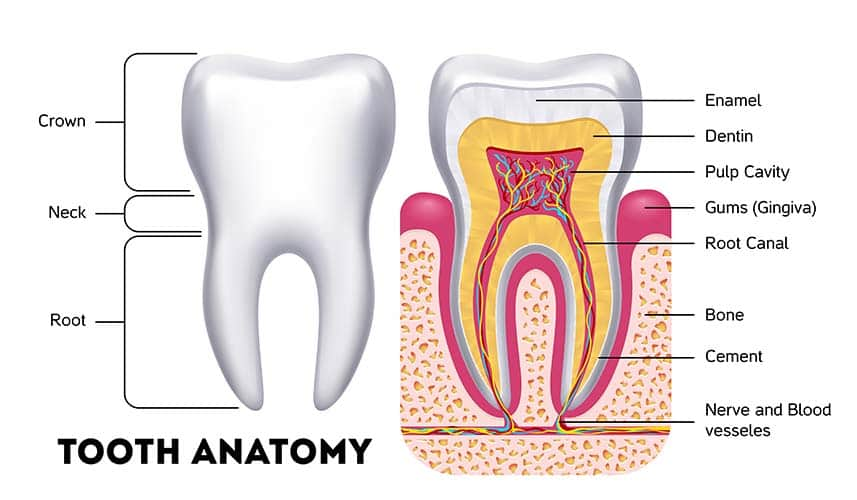Children’s teeth begin forming before birth and can be affected by any problems encountered during pregnancy. While the normal times for the baby teeth to erupt through the gums show a lot of variation, the first teeth to erupt usually appear around age 6-10 months. The first teeth to come in are usually the lower central incisors. All 20 of the primary teeth usually appear by age 3 but the pace and order of eruption varies. Below is a guideline and chart for the usual range of eruption times for the primary teeth. Keep in mind that the eruption times can vary greatly so don’t worry if you little one is a little ahead or behind.

When a baby is teething and the first baby teeth are coming in it can be very painful. The gums are often sore and the child may be irritable and cranky. You can gently rub your baby’s gums with a clean finger or wet gauze to sooth the pain. You can also give your baby a clean teething ring to chew on. Teething should not cause your child to have a fever. If your child does have a fever during teething it is usually unrelated to teething.
Baby teeth can and do often get cavities! Since baby teeth are much smaller than permanent teeth it does not take long for a cavity to become very large and destructive. If left untreated cavities can cause pain and infection of the gums and jaws that can lead to the need for the baby teeth to be pulled. Furthermore, cavities are caused by bacteria and are actually an infection of the tooth. This infection can spread to permanent teeth, other baby teeth, or even siblings’ teeth. (Click here for more information on cavities).
If a back baby tooth is lost early then the teeth next to it can move into the empty space that is left behind. When these adjacent teeth move into the empty space they cause other teeth to move as well creating an overall loss of space in the jaw for the permanent teeth. This causes the permanent teeth to come in crowded, crooked, or may even prevent the permanent tooth from having position to come in at all. As a result, orthodontic treatment may be needed. If a back tooth is lost early then a space maintainer can be placed to keep the adjacent teeth from drifting.

The first permanent teeth to come in are usually either the lower central incisors or the 1st permanent molars (6 year molars) at age 6. The permanent molars do not replace baby teeth but begin erupting behind the baby molars. The baby molars are actually replaced by teeth called premolars (also known as bicuspids). A full adult dentition is made up of 32 teeth, 16 on the top and 16 on the bottom. On the top and bottom each a full set of permanent teeth is made up of 4 incisors, 2 canines (the sharp, pointy eye teeth), 4 premolars, and 6 molars. Each side on the top and bottom has 3 sets of molars. The third molars are referred to as wisdom teeth. Most people don’t have enough room for the wisdom teeth and as a result they usually have to be removed. Dr. buddy has an exceptionally large mouth and still has his wisdom teeth!

Baby teeth and adult teeth are living tissues. They have several layers as well as a dental pulp that contains nerves and blood vessels. The outer layer of the tooth is called the enamel and is the hard protective layer. Enamel is actually harder than bone! The layer below the enamel is the dentin. This layer contain the nerve endings that can cause a tooth to be sensitive. The most internal portion of the tooth is the pulp that contains nerves and blood vessels. The root of the tooth has a canal called the root canal that contains blood vessels and nerves that run all the way up the root into the pulp. The tooth root is encased in the jaw bone and holds the tooth in place. When a baby tooth is lost it is because the root of the baby tooth was resorbed and basically disintegrated. Even though baby teeth usually don’t have any roots on them by the time they are lost they do have roots on them while they are still in the mouth!